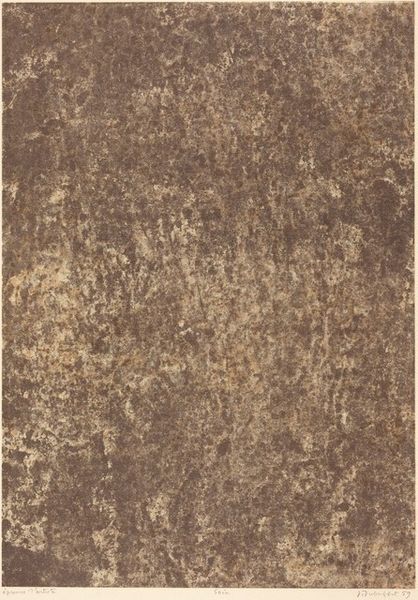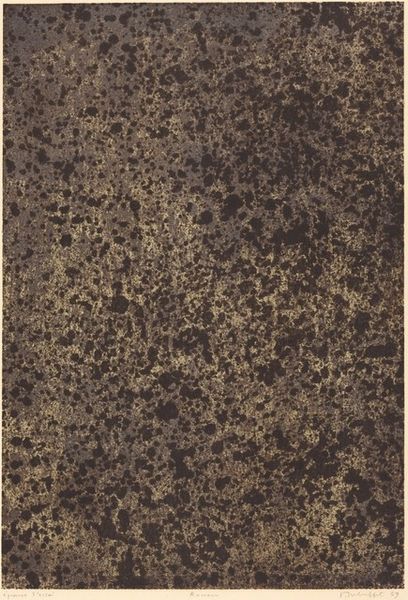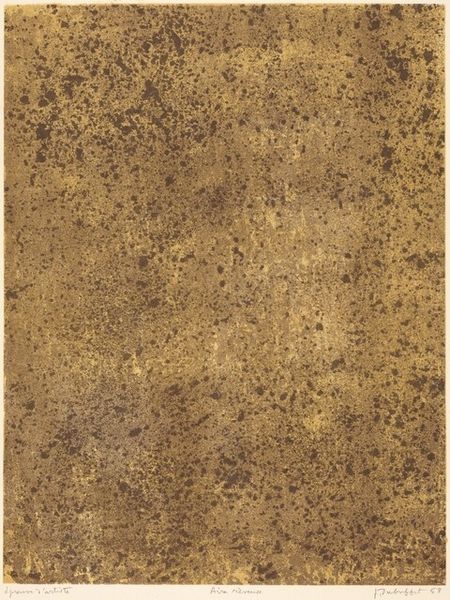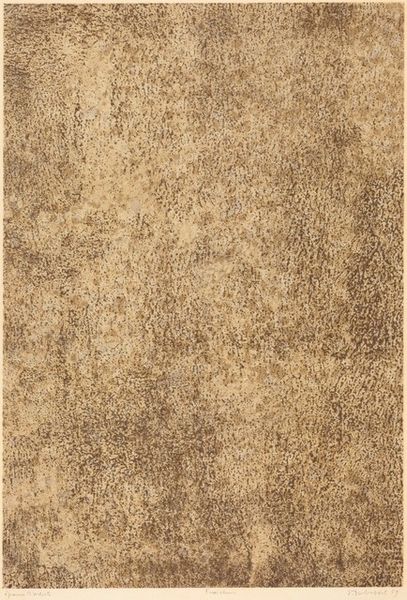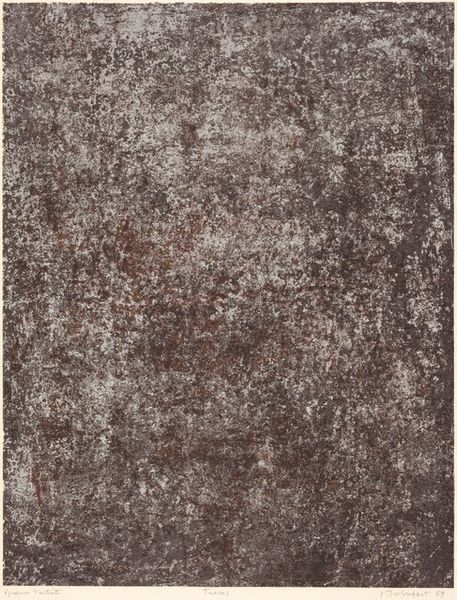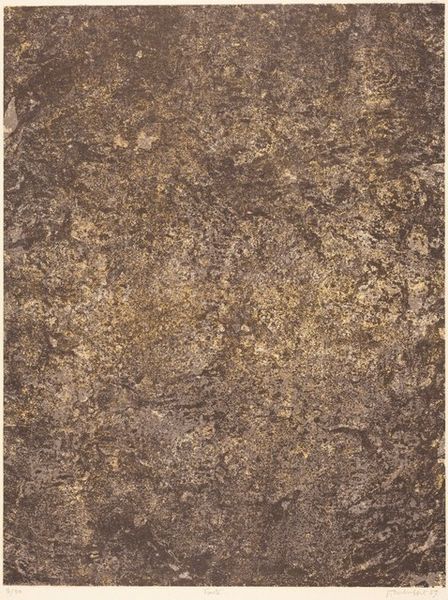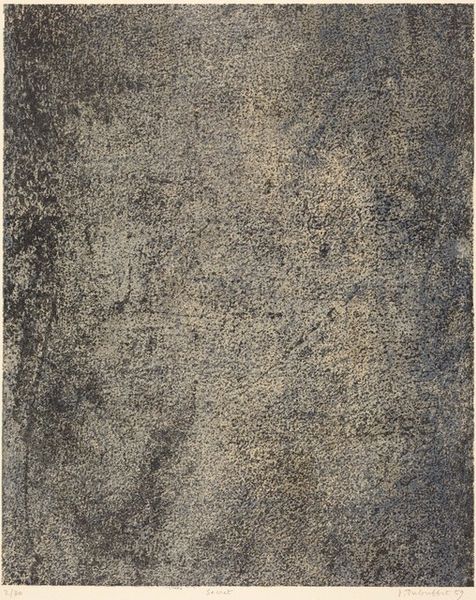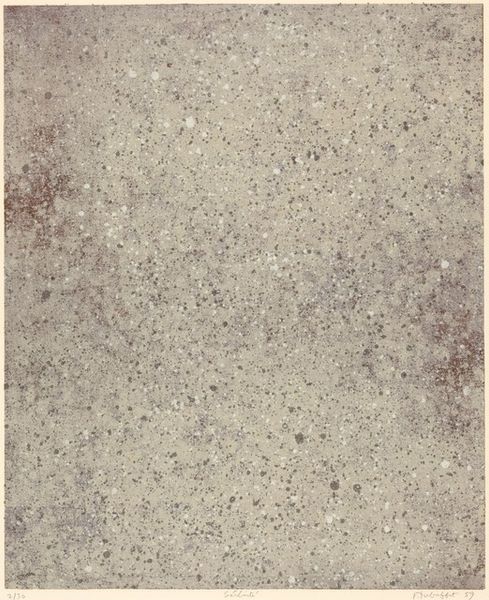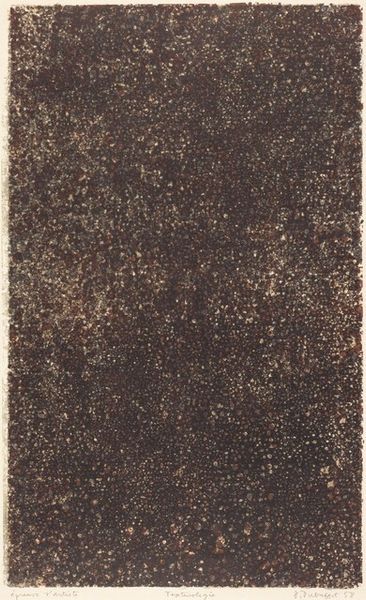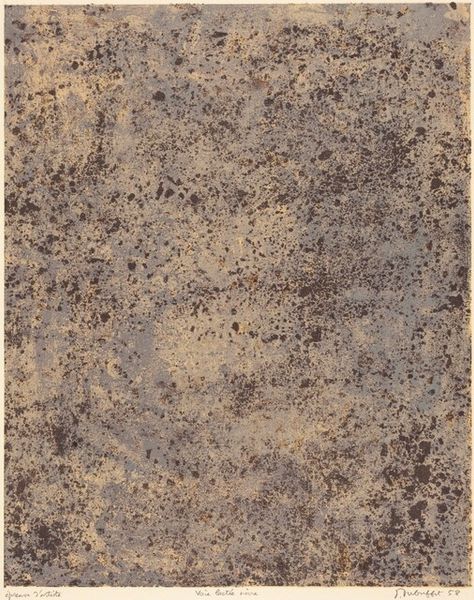
matter-painting, print
#
matter-painting
# print
#
art-informel
#
abstraction
Copyright: National Gallery of Art: CC0 1.0
"Allegresse" was made in 1959 by Jean Dubuffet, but with what? It's hard to tell exactly, but that's part of what I like about it, this all-over texture, created by tiny, almost frantic marks. It speaks to artmaking as a process. Looking closely, the surface feels gritty, almost like asphalt or some kind of stony ground. The colors are muted, browns and grays, but within that, there’s a surprising amount of variation. There's one darker blob sitting a little lower than halfway up the image. Is it accidental or intentional? Dubuffet was deeply interested in what he called "Art Brut," raw or outsider art made by self-taught artists. He sought to emulate this in his own work, rejecting traditional notions of beauty and skill. Dubuffet reminds us that art doesn't have to be polished or perfect. It can be rough, raw, and full of unexpected beauty. Think of Cy Twombly’s scribbles or Antoni Tàpies’s earthy textures.
Comments
No comments
Be the first to comment and join the conversation on the ultimate creative platform.

